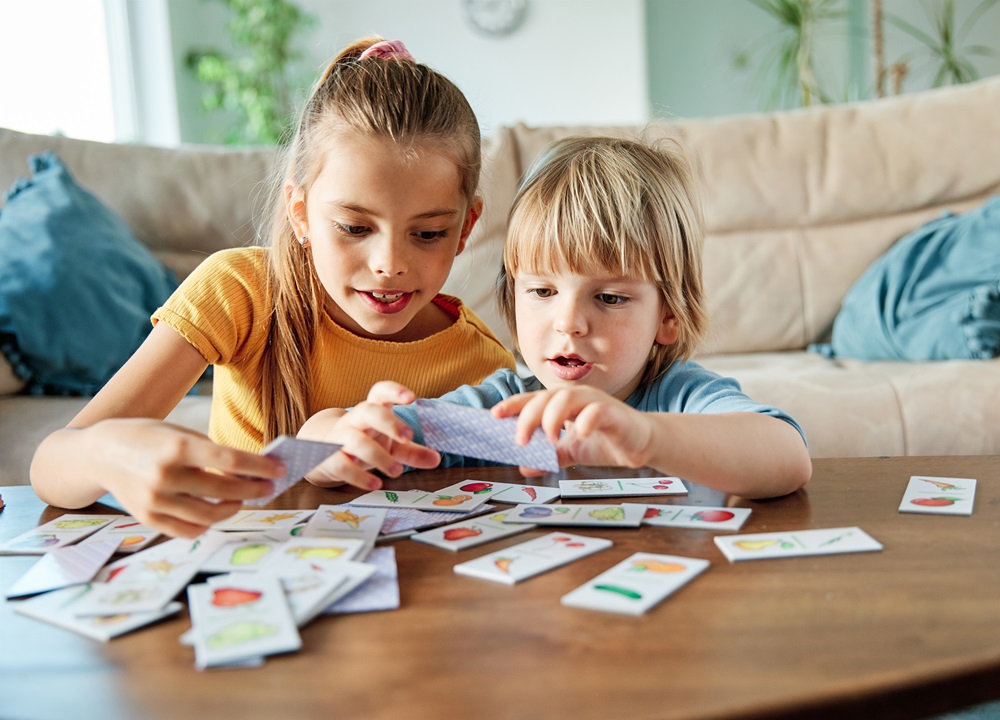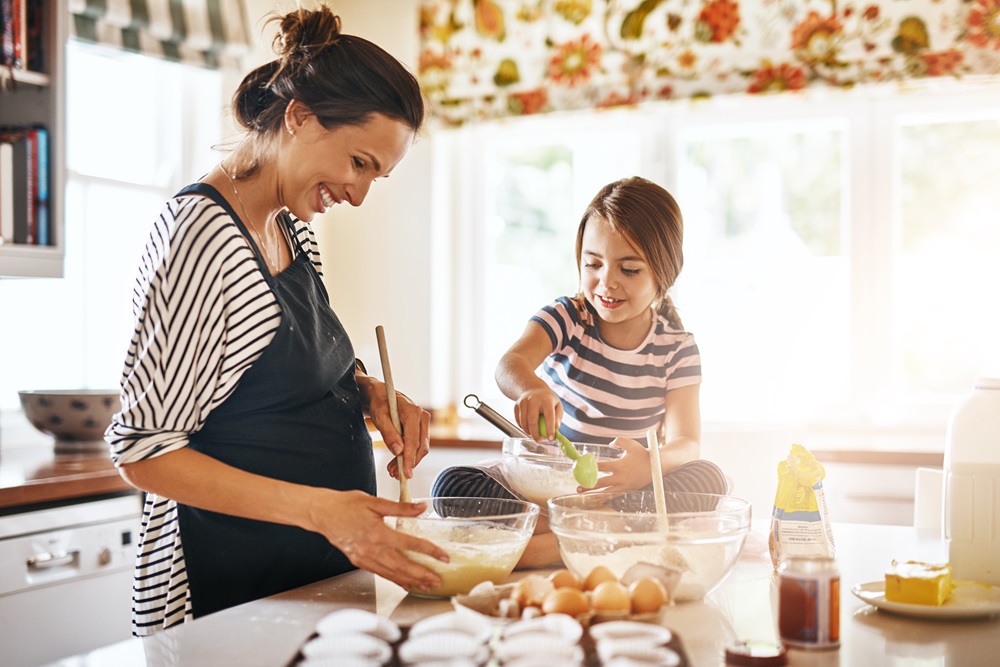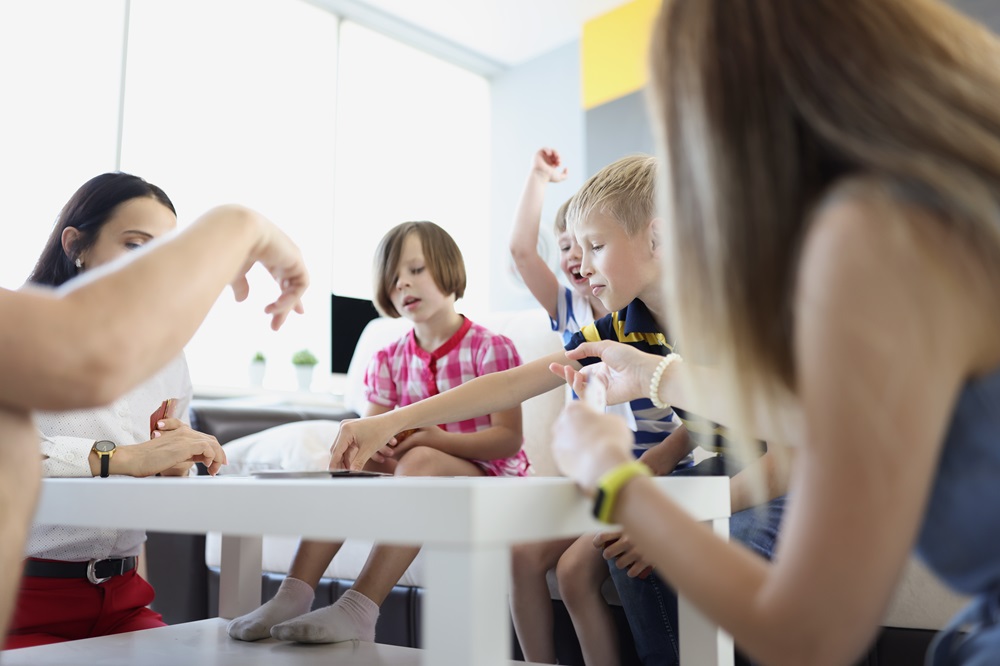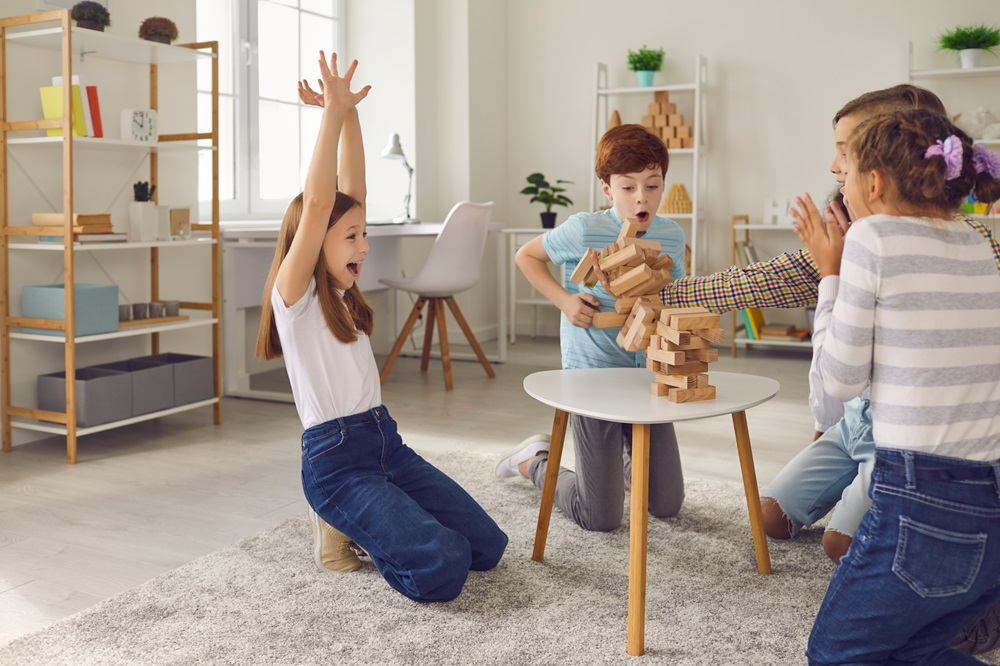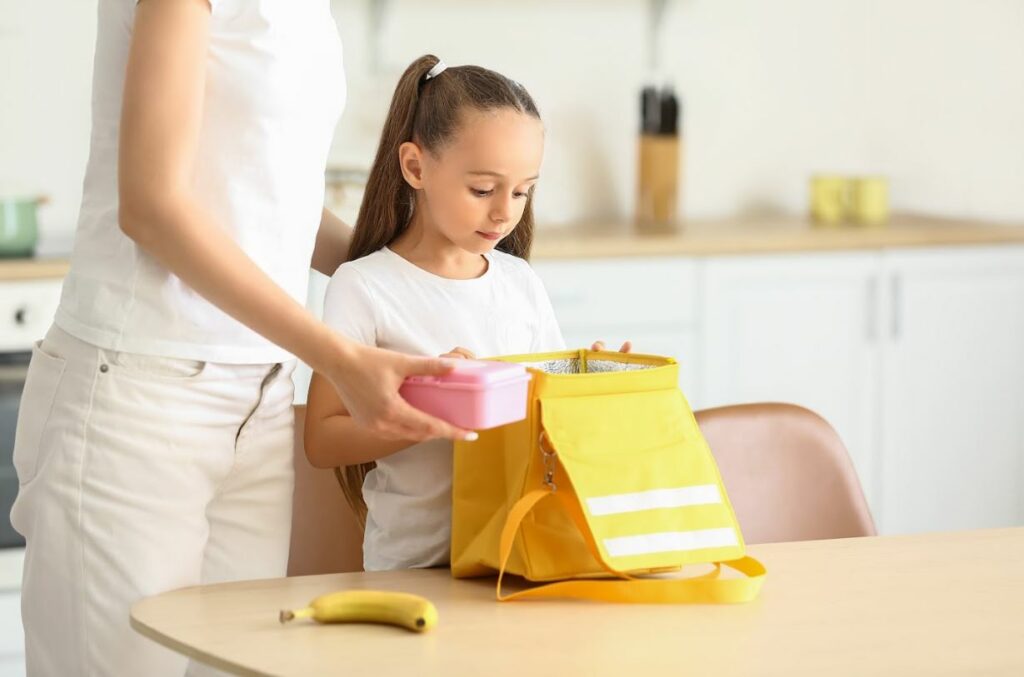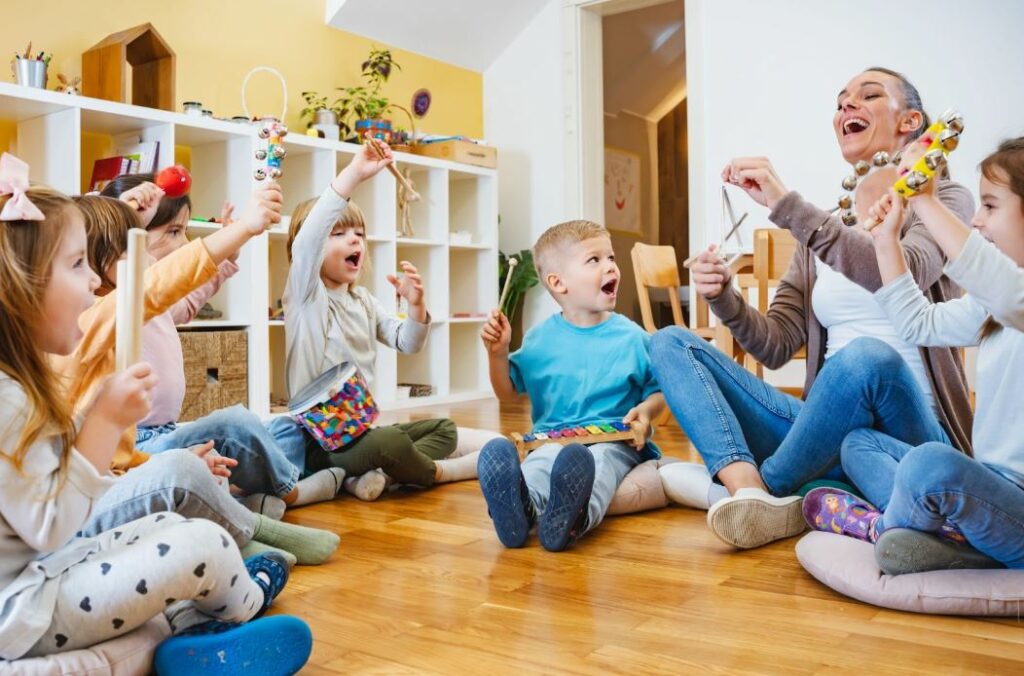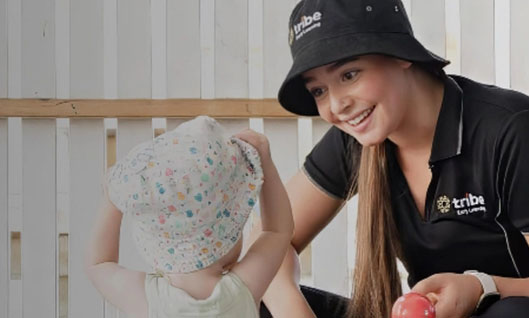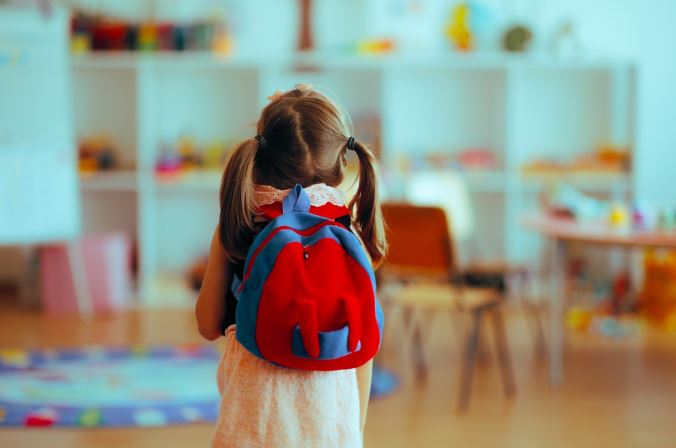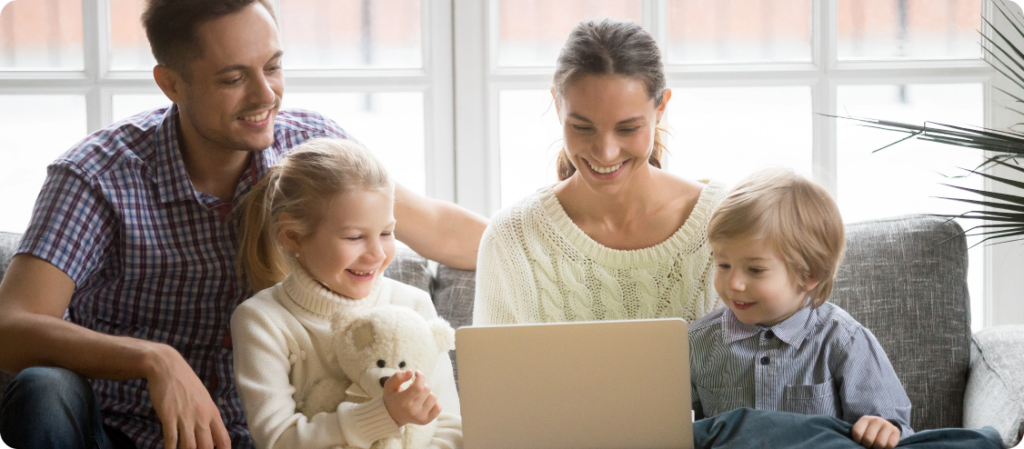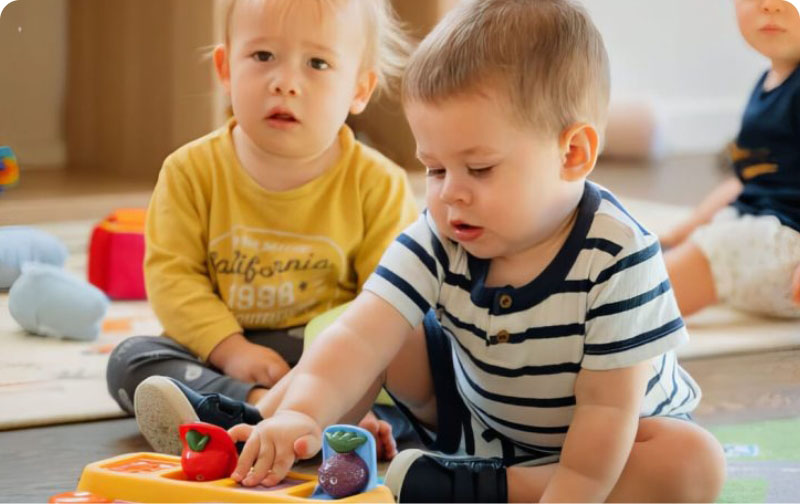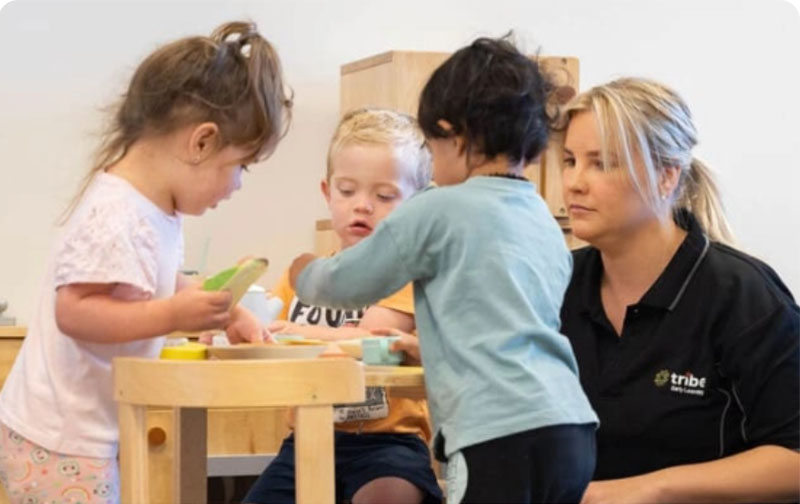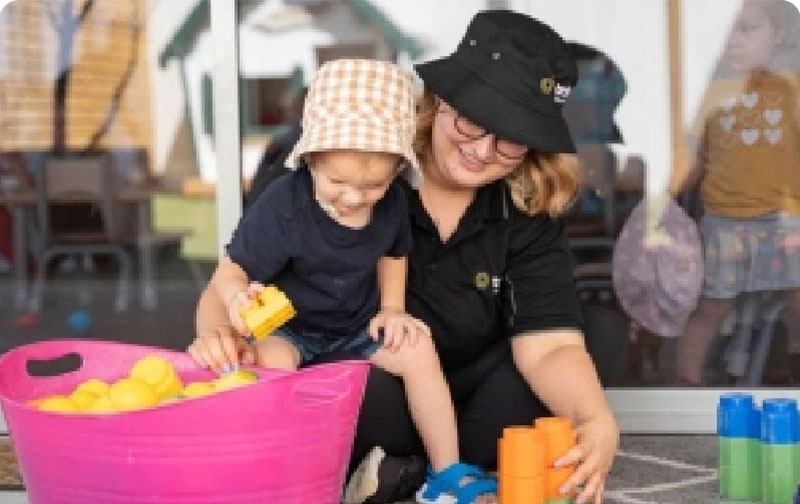These eight different self-regulation activities are designed for children to use on their own, or with help from adults, to build their self-regulation skills.
Self-regulation is utilised when children are taking turns, share, developing patience, compassion, and understanding. Developing mastery of self-regulation helps children to regulate reactions to emotions, such as frustration and excitement, calm down after something exciting or upsetting, as well as focusing and re-focusing.
Red Light, Green Light
What you need:
- Yourself
- A friend or two, or more!
How we play:
- Have everyone line up against a wall, or the end of the playing area.
- Choose a ‘traffic controller’. This person will stand at the other end of the play area. They face the group and says, ‘Red Light’, at which point all players must freeze.
- The traffic controller turns around and says, ‘Green Light’, and everyone starts moving towards the traffic controller.
- The traffic controller can turn to face the group again, saying ‘Red Light’. Everyone must freeze! If the traffic controller spots anyone moving, that person must go back to the beginning.
- When someone from the group reaches the traffic controller, they can tap the controller on the back, who will chase everyone back to the start.
- The person who gets tapped is the new traffic controller, and the game begins again.
Note:
- Children can experiment with moving fast or slow to freeze in time without getting spotted
- You can use an orange light to warn people to move slowly
Memory Match
When children utilise their skills of self-regulation, they are encouraged to take turns, share, develop patience, compassion, and understanding.
When children are working with persistence, they are learning to work through an activity to its natural conclusion, extend their attention span, and not give up when the experience is challenging.
Focussing on memory retention through play experiences helps children hold onto information long enough to use it. Working memory plays an important role on concentration and in following instructions.
What you need:
- A4 White Paper
- Coloured paper or cardboard.
- Scissors
- Glue stick
How we play:
Begin by creating the memory match game with paper and drawing materials.
- Divide a piece of paper into 6 rectangles/squares with a ruler.
- The child/children can draw 2 x identical pictures in 2 of the squares (they will be the match).
- Repeat this process 3 times or more (depending on how many matches you would like to have for the game).
- Once the drawings have been completed, cut the matches out along the lines.
- Stick the matches individually onto coloured paper so you cannot see the matches.
- Optional to laminate the pictures so that they game will last longer.
Game Time!
Once the game is made, congregate in a circle or opposite each other. Have one person shuffle the cards then lay all the cards face down in the middle. Each person participating in the game will have a turn at choosing 2 cards at a time to turn over and check whether they are a match or not. If there is a match, you get to have another turn!
Continue this until all the matches have been found. Focus on following the rules and not turning more than two cards over in each turn. Enjoy!
Lazy 8 Breathing
The lazy 8 breathing is a great activity to support children in the development of their self-regulation. Through the focus on mindfulness children are able to explore their inner selves.
The lazy 8 breathing is a tool that can be used to help children to find calm and peace when they need to concentrate to engage in a learning experience. Breathing techniques are a great support to children development they can in fact use those techniques on their own and with the time learn when and how use them for their benefit.
Lazy 8 can be used in many occasions in which the child needs to re-set and find a way to set in to a lower energy level. Having the chart next to the bed can help to relax before rest time.
What you need:
- Lazy 8 breathing template
- Quiet place
- Dimmed light
- Sound music (Optional)
How we play:
Step by step instructions:
- Take your lazy 8 breathing template
- Colour it with 2 different colours or patterns following the 2 sections of the chart
- Sit in a comfortable place with your coloured chart on your laps or in front of you.
- If you like add a sound music in the background and dim your light so that the environment is cosy and comfortable.
- Start to breath in while you pass your finger on the first section of your chart.
- Breath out once your finger reached the second section of the chart.
- Keep on tracing the chart with your finger, synchronizing it with your breath.
- Keep on going until you feel relaxed. If you like close your eyes and engage in a little meditation.
The Lazy 8 breathing technique and the creation of the chart will support children in their ability to take charge and manage their own emotions and energy. The lazy 8 breathing technique will empower children agency around their wellbeing.
Cooking Time
Hands on cooking activities help children develop confidence and skill. Following recipes encourages children to be self-directed and independent, it also teaches them to follow directions and develop problem-solving skills.
Cooking encourages children’s thinking, problem-solving, and creativity. It also allows children the opportunity to use the knowledge they have and apply it by counting, measuring, following a sequence, following directions, and cause and effect.
What you need:
- 280g Self raising flour
- 100g caster sugar
- 2 teaspoons baking powder
- 2 tablespoons desiccated coconut
- 280ml Coconut milk
- 140ml canola/corn or sunflower oil
- 4 tablespoons golden syrup/maple syrup
How we play:
Cooking and following recipes are a great way to develop self-regulation. It provides the opportunity and space to focus on key developmental areas – planning and organisation involved, self-control when not touching their face once they have washed their hands, self-monitoring and cognitive flexibility. It’s also fun to eat what you make.
Below are the instructions to make our ‘Egg free coconut cupcakes’:
- Preheat oven to 180 degrees
- Line cupcake tray with oil or cupcake cases
- Put flour, sugar, baking powder and desiccated coconut into a bowl or mixer.
- Add coconut milk, oil and syrup.
- Mix well and then add to cupcake tray
- Cook for around 20 – 25 mins.
- Allow to cool before removing from tray as they can be a little fragile.
This is Not a Stick
This dramatic arts experience, allows children to effectively take on different roles and scenarios they are interested in. The children can learn about the importance of turn-taking and sharing in a social situation, while using their self-regulation skills to regulate their emotions and feelings. Research highlighted in The Early Years Learning Framework (2009), highlights that children become confident and engaged learners when they are provided with the opportunity to work with each other, share their humour and happiness and overall build upon their executive functioning skills, and working memory.
In this example, you will need the following resources at home:
- At least 4 participants in the activity.
- A stick or wand to represent a stick.
How we play:
The children are encouraged to effectively stand in a circle, while taking turns at holding a stick. Firstly, the teacher explains the rules of this activity, by demonstrating how to play. For example, “This is not a stick, this is a____(broomstick)” while pretending to fly a broom stick.
From here, the children can think about what they would like to imitate prior to having a turn. For the purpose of this activity, it is important the children share and take turns, while listening effectively to each other. The aim of the activity is to think of creative, new ideas and not to repeat previous actions. This allows the children to continue engaging in the dramatic arts, where they can take on various roles and scenarios that interest them. It enables them to broaden their understanding of the world surrounding them, while effectively inserting themselves into a social situation.
Also, this can easily be modified to the home environment, where each family member stands in a circle and takes turns at holding the stick and thinking of a new action. Activities like this, enables children to practise using their self-regulation skills in different learning environments, and transferring skills from one setting to another. Furthermore, it provides young children with the opportunity to cooperate, work together and use their cognitive skills that allows them to self-regulate their feelings and emotions.
Snap!
Through this game children are invited to solve problem, to develop a sense of trial and error, expand math skills, such as sequencing and numeracy, extend taking turns and such a complex of social skills. This learning experience builds on our core skill of self-regulation.
Throughout this experience children will develop and expand their maths skills as well as being able to self-regulate and challenge themselves through the cards counting. They would have to keep focused through the whole counting so every player would get the same number of cards.
Mathematical skills are a crucial part of children development to enhance the sense of the world and self-awareness. Through daily math concepts we foster children’s understanding of numbers, sequencing, spatial awareness and how to connect them to real life.
More advanced mathematical skills are based on an early math “foundation”, snap game is a way of children to expand those concepts and build an understanding and awareness of it.
What you need:
- Snap cards
How we play:
- Let’s get our snap cards, it can be any that you already have at home.
- Make an inviting and enjoyable playing area, children love to feel welcome and comfortable.
- Set the rules up, explain to children what they are going to do, how the game works and help them to be ready.
The player to the left of the player that hand out the cards goes first, and the play then moves clockwise. On their turn, each player turns over the top card from their face-down pile. When someone turns over a card that matches a card already face-up on another player’s pile, players race to be the first to call “Snap!” The player who calls “Snap!” first wins both piles and adds them to the bottom of their face-down pile.
If two players call “Snap!” at the same time, the two piles are placed in the centre of the table and combined into a face-up snap pot with one of the two matching cards on top. Play then continues where it left off. But before the game they would have to go through few steps as counting how many players and hand the same number of cards out for each of them. Helping each other to shuffle the cards, picking up the cards in one pile and then hand the cards out to each player. When handing the cards, children will have to be very attentive to not miss any friend, or any number. If noticing that a friend will not be sure about the next number or even going a bit lost over the counting, you can always help.
Stretching our maths skills will develop children’s understanding of sequence as remembering who the last friend will be to receive the cards and which one comes next.
Okay, cards in hands, players ready, let’s SNAP!
Dancing With Ribbons
Dancing with ribbons encourages the children to regulate themselves based on the speed of the music.
What you need:
- Sticks
- Coloured ribbons
- Music
How we play:
The first step is to make the ribbon sticks. To do this we need a stick or anything that’s long enough to hold e.g. a chopstick. Cut up some ribbons the same length and sticky tape the ribbons to one side of the stick. Great! Now you have a beautiful ribbon stick to do beautiful dancing.
Now we need music! Playing music that has different beats will encourage different dance moves with the ribbons. When the music is fast the dance moves could be moving the ribbons really fast in the air or going around in a circle really fast around and around. When the music changes to slow music it could be dancing with the ribbons really low to the ground or swaying them from side to side.
Encouraging children to dance to the sound of the music with their ribbons gives them the opportunity to regulate their changing emotions. From being really excited, jumping around and moving quickly when the music is fast. To feeling peaceful, focused and graceful when the music is slow.
Regulating emotions is a core skill development for children to be exposed too. This is a fun way to involve the whole family and see what fun dance moves you can come up with altogether with the ribbons.
Jenga
When children engage in experiences which challenge their understanding of mathematical concepts, they begin to problem solve and create strategies during play. These hands-on experiences create memory, motor planning and new ways of learning.
What you need:
- Jenga Blocks ($5 at Kmart)
How we play:
Jenga is a fantastic game for children to challenge their thinking, learn about mathematical and engineering concepts and share their thoughts with each other about which block would be best to take out next.
- Set up the Jenga tower. Place three blocks one way and three blocks facing the other way until all the blocks have created a tower.
- Each player takes turns to critically select a block without the tower falling down.
- If the tower does get knocked down, build it up again and see if you can remove more blocks the next time. Don’t forget, take your time.
